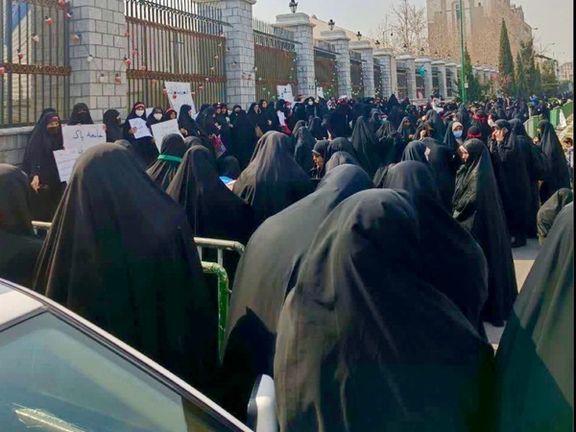Iran conservatives denounce hijab style bloggers as moral threat

Conservatives in Iran are criticizing hijab style bloggers for undermining Islamic femininity, promoting vanity and luring religious women away from traditional dress.

Conservatives in Iran are criticizing hijab style bloggers for undermining Islamic femininity, promoting vanity and luring religious women away from traditional dress.
Rasekhoon, a youth-focused online outlet promoting Islamic values, seethed about the trend in a column last week as an inversion of the hijab's purported main purpose: modesty.
"(The bloggers) appear to observe the basic requirements of Islamic hijab, yet simultaneously seek attention and align themselves with global beauty standards," read an editorial on the outlet.
"They do so with bright colors, modern cuts, heavy makeup and a wide array of accessories.”
The publication argued that this emphasis on attractiveness erodes the spiritual purpose of the hijab and encourages visibility over modesty.
Internet-friendly modeling, it added, undermines the spiritual purpose of the hijab with its emphasis on attractiveness and drawing attention and visibility.

“Hijab-style influencers are the front-line soldiers of the cultural war, pushing religious and spiritual practices toward decadence,” Razieh Jabbari, a hijab activist, told the Revolutionary Guards-linked Tasnim News Agency last week.
“Behind these individuals stand think tanks seeking to alter religious lifestyles and appearances, trivialize our cultural and spiritual values, and promote a version of ‘American-approved Islam’,” she said.
Historically, the Islamic Republic has promoted the chador—a long black veil covering the entire body—as the ideal dress code for women.
Not popular
While officials often claim widespread support for Islamic veiling, only a minority, perhaps around 15 percent, wear the chador consistently.
According to a 2022 survey by independent research group GAMAAN, over 70 percent of men and women opposed mandatory hijab laws.

“The professionalized style promoted by hijab bloggers has even managed to influence the tastes of part of the population who is religious and believes in hijab, encouraging them to replace the traditional chador with long, modest manteaus,” the Jam-e Jam newspaper wrote.
This year, during the Arbaeen Walk to the shrines of Shia Imams in Iraq, hijab-style bloggers produced a flood of content. According to critics, “Their aim is to reduce grand ceremonies from a ‘spiritual and revolutionary event’ to a mere ‘spectacle—shallow and superficial,” Jabbari told Tasnim.
In Iran, the hijab functions not only as a religious observance but also as a political symbol tied to the state’s identity. Since 1979, the legally required hijab has been presented as a marker of revolutionary authenticity and resistance to Western influence.
For hardliners, enforcing the hijab validates the Islamic system, while opposition is framed as a challenge to state authority.
Women’s clothing has thus become a recurring political battleground, where debates over morality, freedom and national sovereignty converge.
Since the death of Mahsa Amini in September 2022, Iranian women have persistently defied the state's compulsory hijab laws, transforming personal acts of resistance into a powerful political statements.
In Tehran and other urban centers, going unveiled has become more common, although most women still carry scarves for public offices, banks or transport to avoid confrontation. Few dress entirely as they wish; most compromise with long sleeves and modest skirts while avoiding sleeveless tops, shorts or short skirts.
In May, Iran’s Supreme National Security Council shelved a new hardline bill mandating stricter hijab rules, likely to avoid a public backlash.
While enforcement has not disappeared, but reports of women facing harassment, including fines and impounding of their vehicles, are not as common as before.